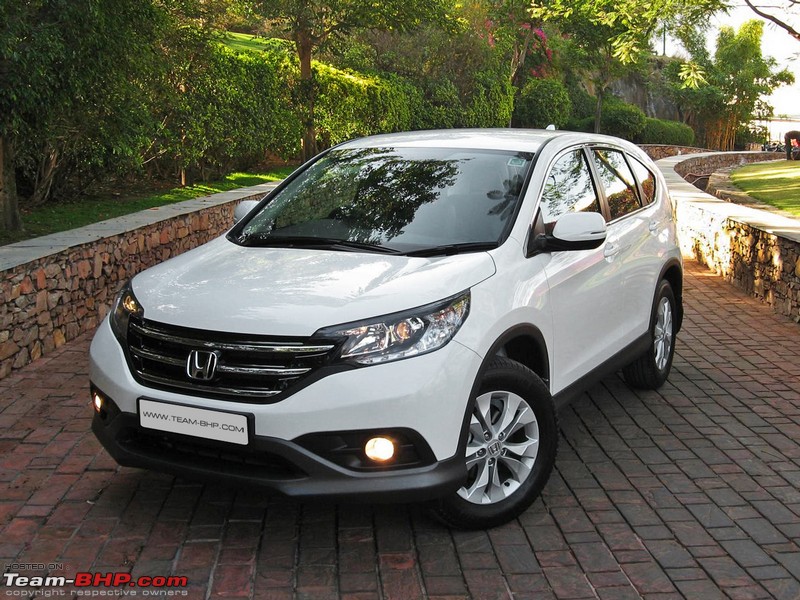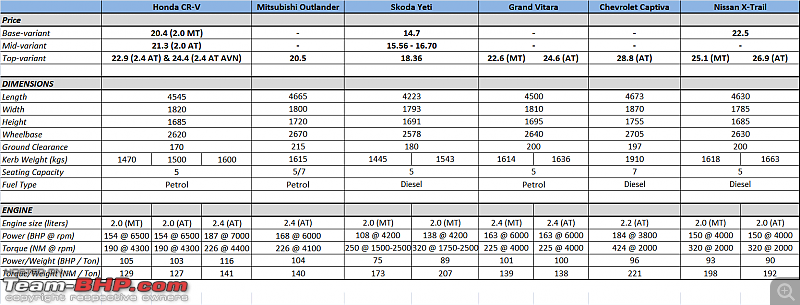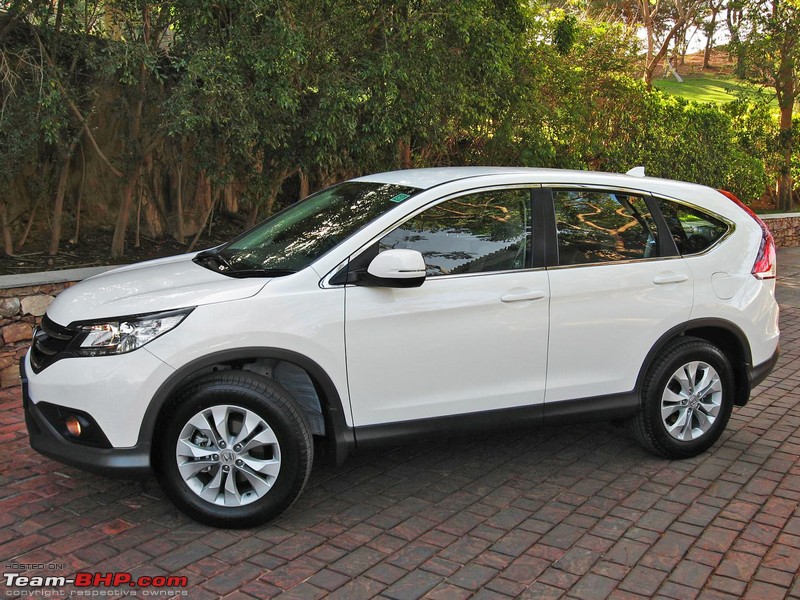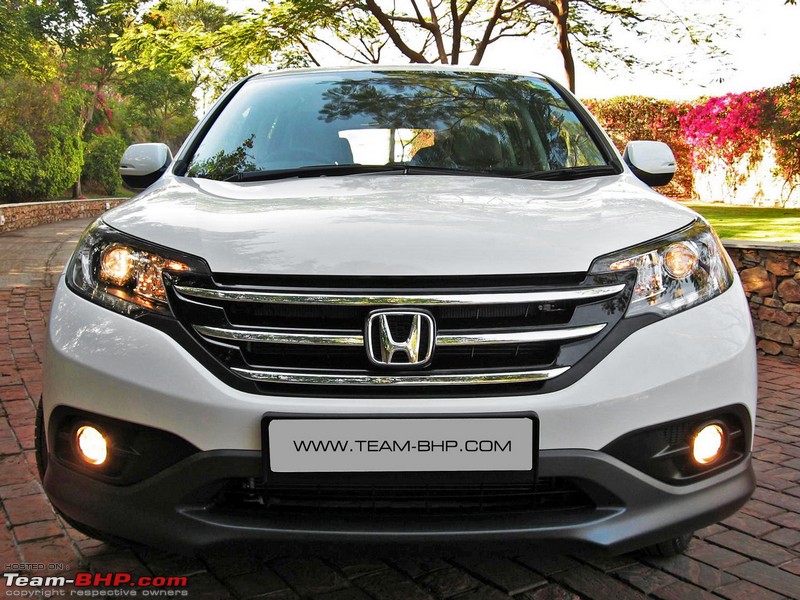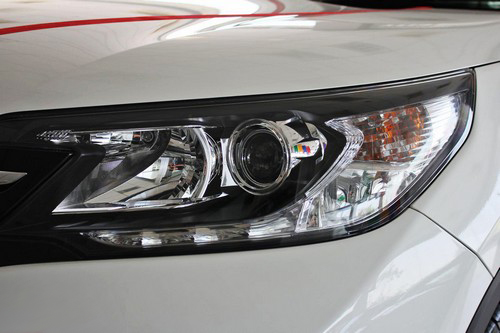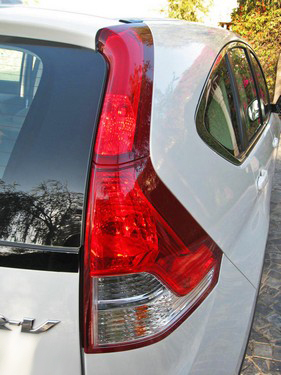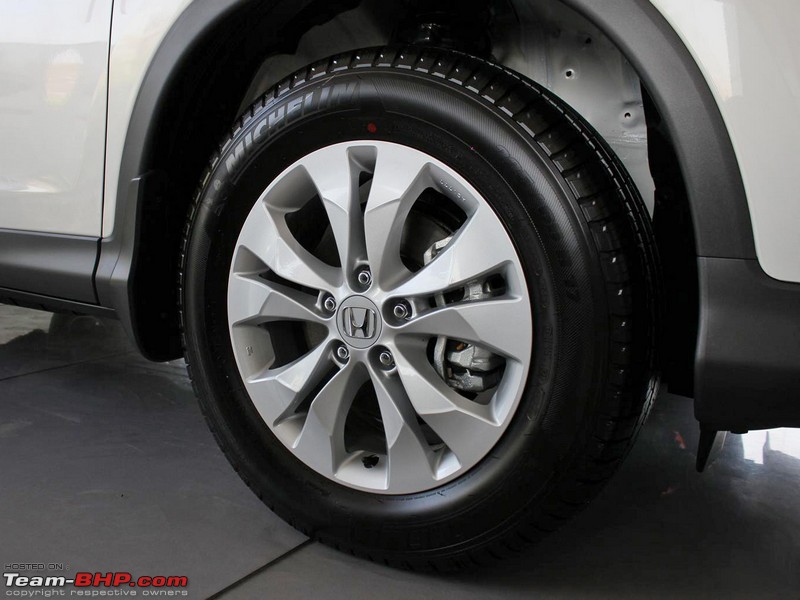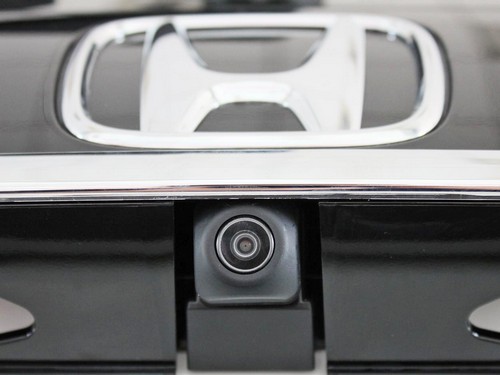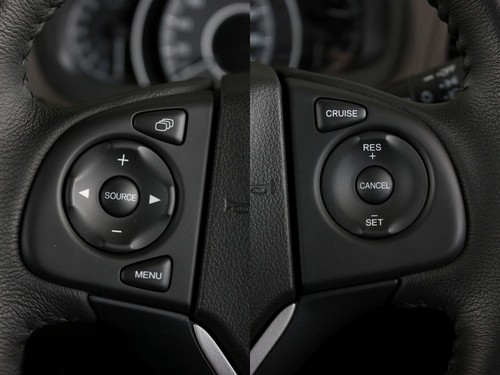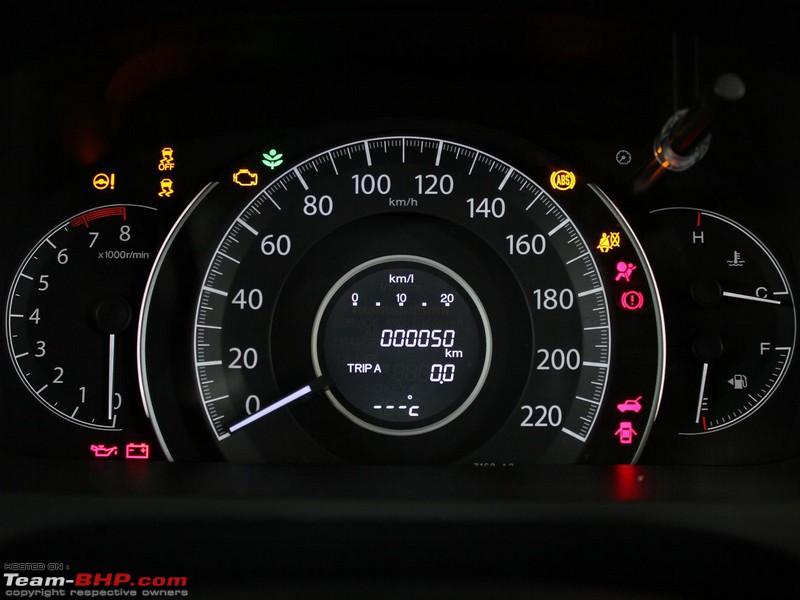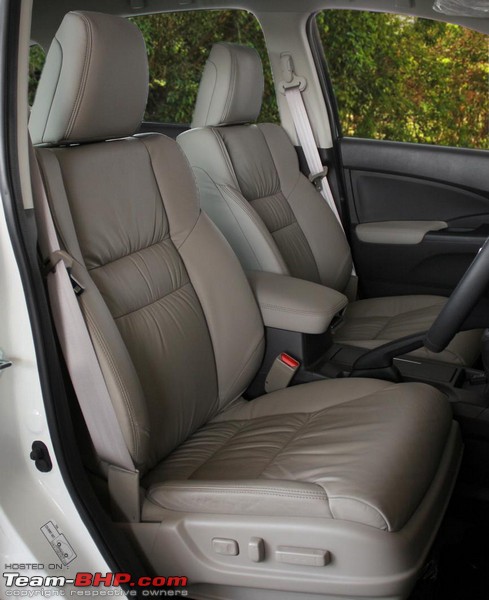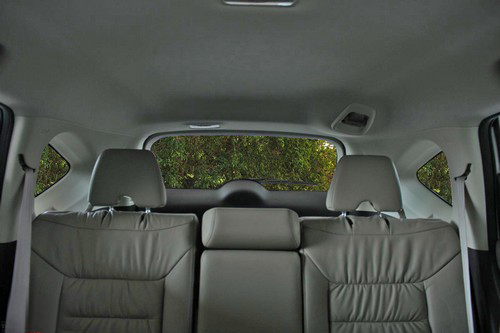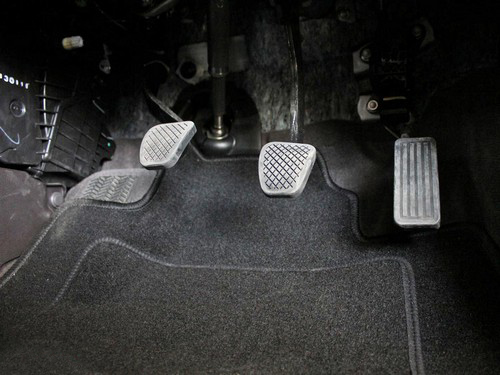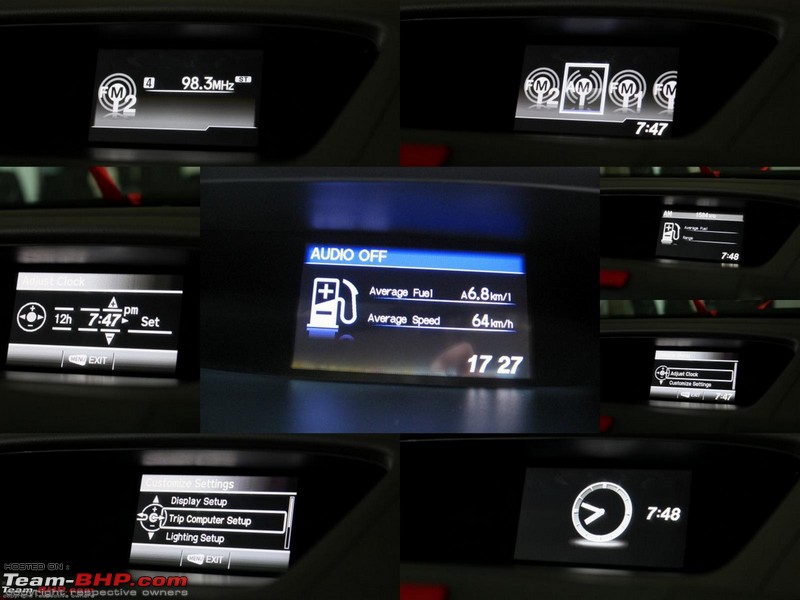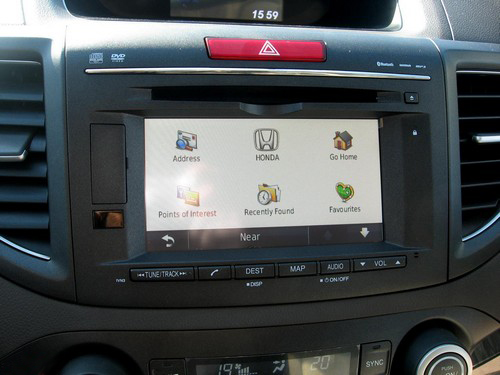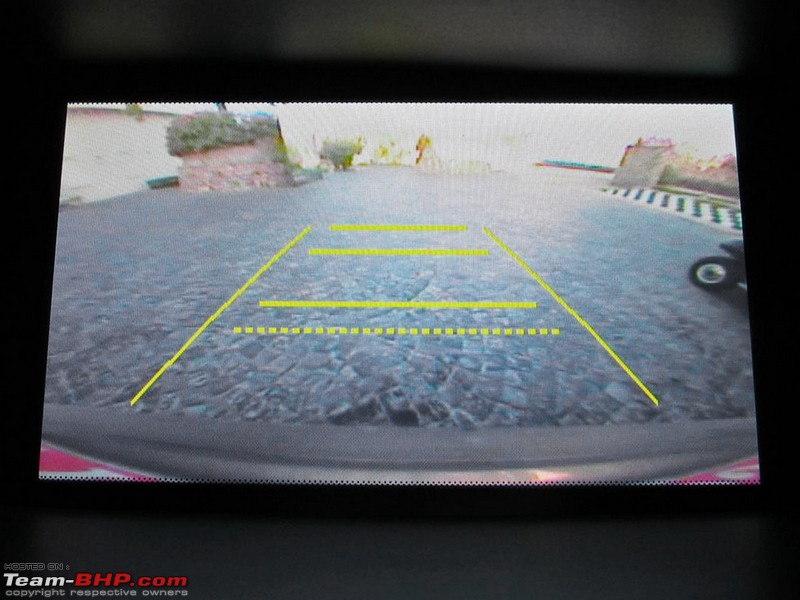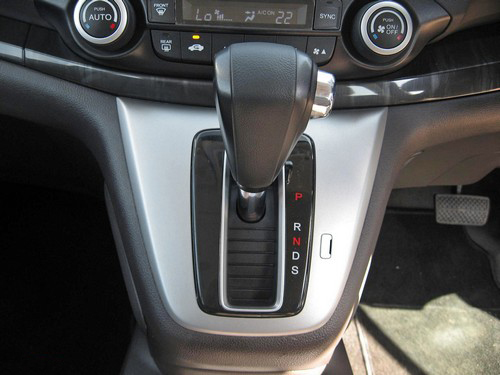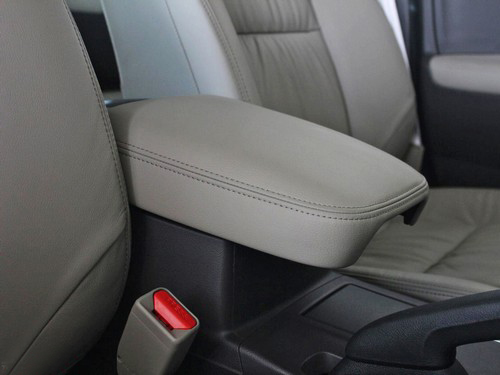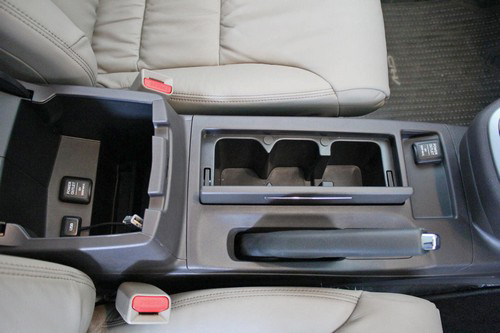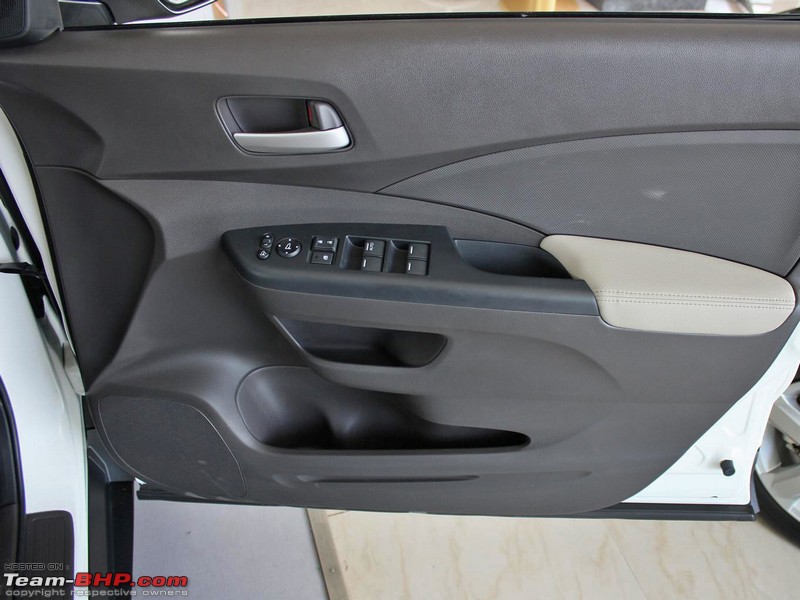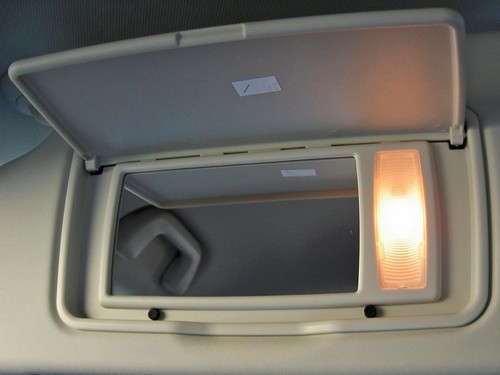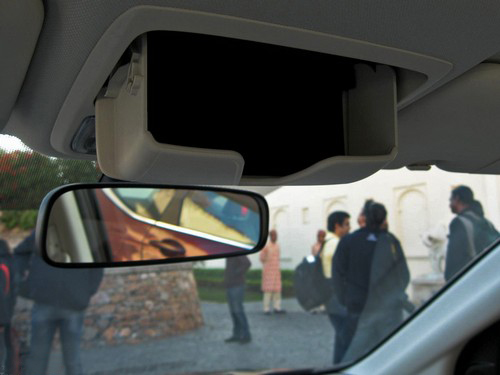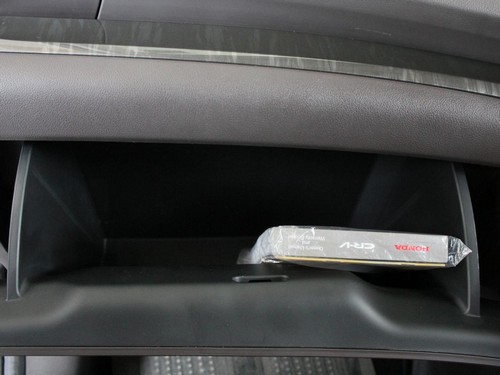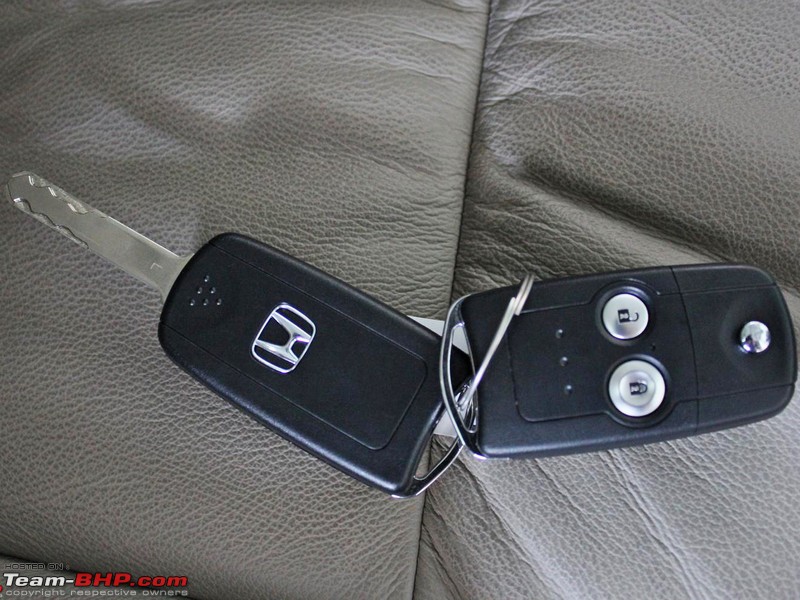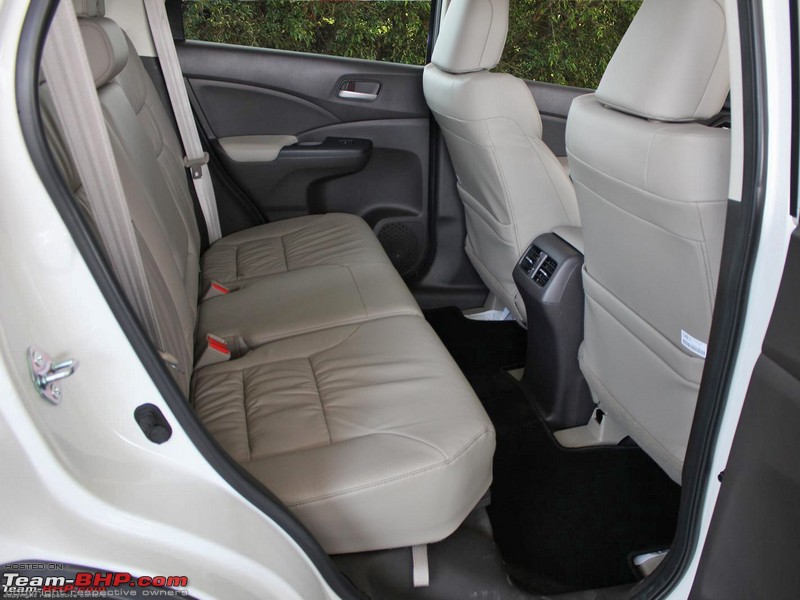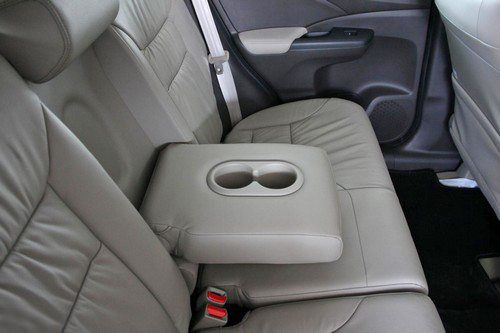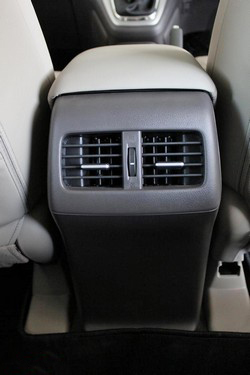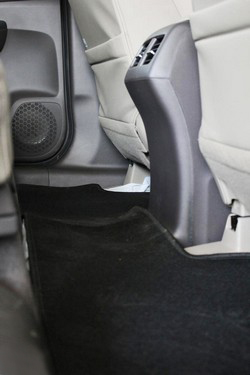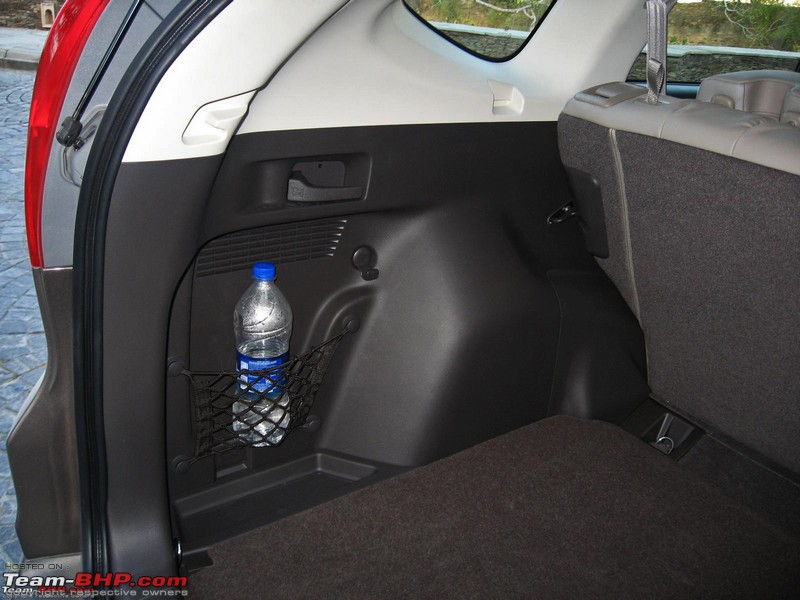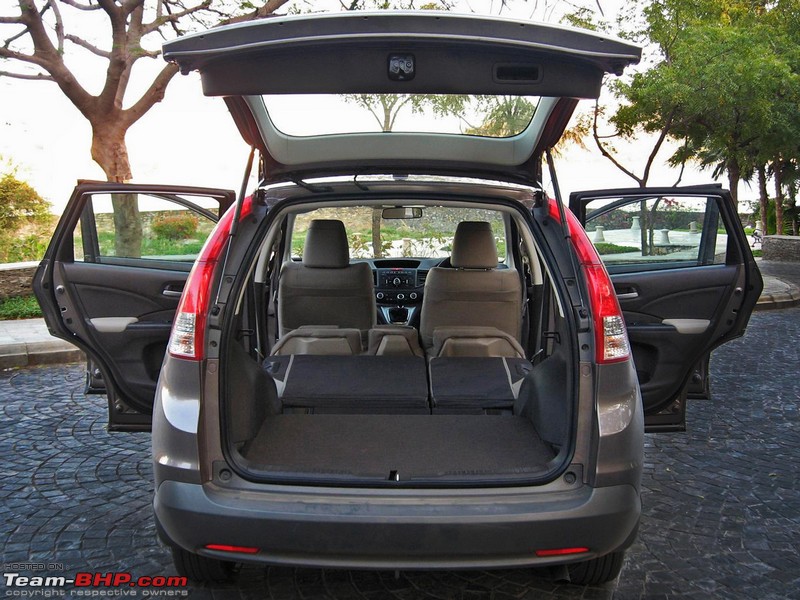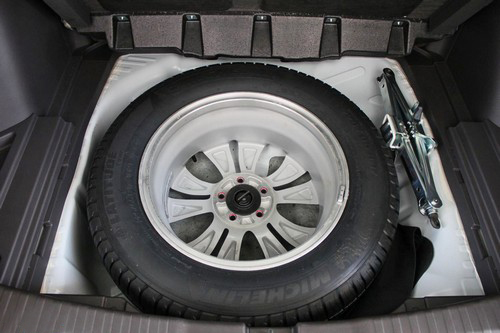The Honda CR-V has two petrol engine options.
The 2.0L SOHC Motor:
154 BHP (@ 6,500 rpm). A 13 BHP gain over the outgoing CR-V 2.0L
190 Nm of torque (@ 4,300 rpm)
ARAI rating of 13.7 kpl
6-speed manual or 5-speed auto transmission
FWD layout
The 2.4L DOHC Motor:
187 BHP (@ 7,000 rpm). A 29 BHP gain over the outgoing CR-V 2.4L
226 Nm of torque (@ 4,400 rpm)
ARAI rating of 12 kpl
5-speed Auto with paddle shifters. No manual transmission offered
AWD layout
The 2.0 is a smooth motor and is meant for the sedate driver who doesn't want extraordinary performance. Low end torque is just about acceptable, and this is a typical Honda engine that you need to revv to get the best out of. In bumper to bumper traffic, the mediocre torque (only 190 Nm) is evident and you have to keep your left hand busy with the gearshift. The 6-speed manual's clutch is super light and makes gear shifting effortless. It's a joy to use the gearbox and the 6 ratios are well chosen to extract the most from the engine. On the open road, the 2.0L is extremely redline happy, like most Honda petrols. In fact, the 2.0 MT feels quicker than the 2.4 AT (
although it might be a different story with the 2.0 AT which we haven't driven). The 6th gear ratio is very tall and should maximise tank range on long highway drives.
It is the 2.4L petrol that feels more at home in a car of this size and price. The engine's additional muscle is immediately evident, and the motor offers more grunt all through the revv range. It is capable of making fast progress on the open road too. What's more, the engine note at high rpms is immensely sporty, although some folk might find it to be too loud. Unfortunately, the only transmission of choice with the 2.4 is a fairly old-school 5-speed automatic. This slushbox is nowhere as quick as the competition's gearboxes. The AT feels lazy and even makes a loud whine at high rpm. Kickdown response time is poor; you're better off using the paddle shifts to demand a downshift. Note that you can hold the engine to the redline with the paddle shifters. To an enthusiast, the best engine + transmission combination would have been the 2.4L petrol with the 6-speed MT; unfortunately, the CR-V isn't available in that configuration.
The CR-V is equipped with an ECON button that can make the SUV run in economy mode.
ECON maximizes fuel economy by adjusting the performance of the engine, transmission, air conditioning and cruise control. As an indicator of your driving efficiency, the colour band encircling the speedometer progressively turns green. ECON mode doesn't lead to a major difference in the fuel economy though, and you can expect the CR-V's urban FE to remain in the single digits. The 2.0 MT will be more efficient than the 2.4 AT, due to the manual transmission, lack of AWD and a lighter kerb weight. The absence of a diesel engine option is the CR-V's Achilles heel in the Indian market. Considering our fascination with diesel SUVs, and the fact that a CR-V diesel is sold internationally, it's inexplicable why Honda hasn't launched the oil-burner variant here.
There is a disappointingly high amount of wind and tyre noise at highway speeds. This isn't expected on a vehicle costing over 20 lakh rupees and will be an area of complaint with CR-V owners. It takes away from the premium experience that you expect of an expensive car.
The CR-V's steering is extremely light at low speeds, something that will please a majority of its users. The effortless steering feels very direct and makes city driving a breeze. Trouble is, the steering stays light at high speed. You need to keep a firm hand on the wheel, as it's quite sensitive and can give you a scare or two if you get distracted. The older CR-V's hydraulic power steering weighed up better on the expressway. The EPS' feedback is nothing to write home about either.
Ride quality is decent for the most part, and the CR-V absorbs most bumps with aplomb. There is an underlying firmness though, which you feel on large potholes or broken roads. Overall, most owners will end up satisfied with the CR-V's ride comfort. The best part of this SUV is that it rides like a car, unlike the unwieldy body-on-frame competition. This Honda will easily run rings around the likes of the Fortuner & Endeavour. The CR-V is nimble on its feet and maneuvering through traffic is easy. Parking isn't a big deal either, and made easier by the very competent rear view camera. Body roll, although present at high speed, is within safe limits. You can easily push the CR-V through fast corners, in a manner that most other SUVs can only dream of. Note that the 2.0 FWD CR-V feels more agile than the 2.4 AWD. Braking capability is top class and the car stops from 100+ kph with no fuss. The CR-V has disc brakes on all 4 wheels, along with ABS & EBD. Monocoque SUVs are so much better suited to the needs of most Indian customers.
The CR-V AWD is meant to be an "on-road" SUV. It drives primarily in FWD, switching to AWD mode & sending power to the rear wheels only when additional traction is required (
say, under hard cornering). At best, the CR-V's AWD system can manage the occasional slush, muck & sand. The 170 mm of ground clearance isn't much by SUV standards, although we didn't encounter any problems on our drive. We'll have to wait for Team-BHP Ownership Reports to know whether the CR-V scrapes over large speed-breakers with a full load onboard.
The
ECON button:
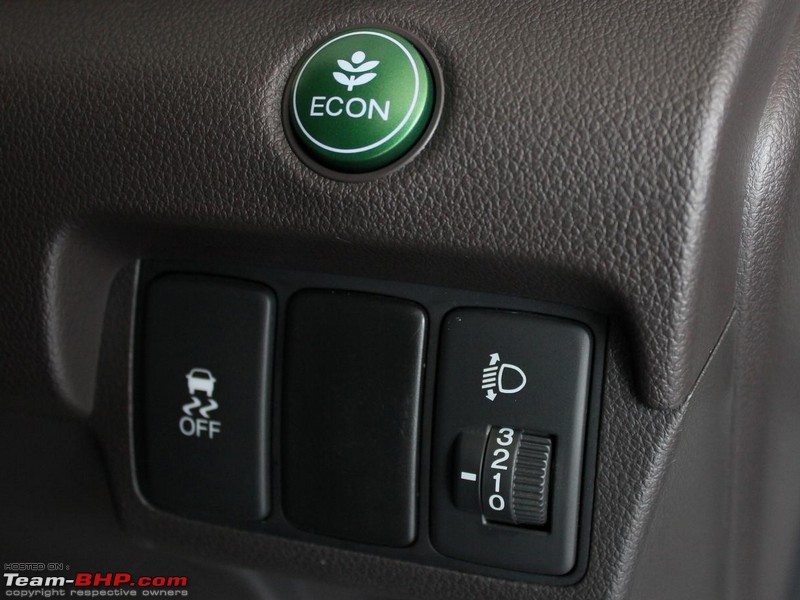
6-Speed manual transmission is a joy to use:
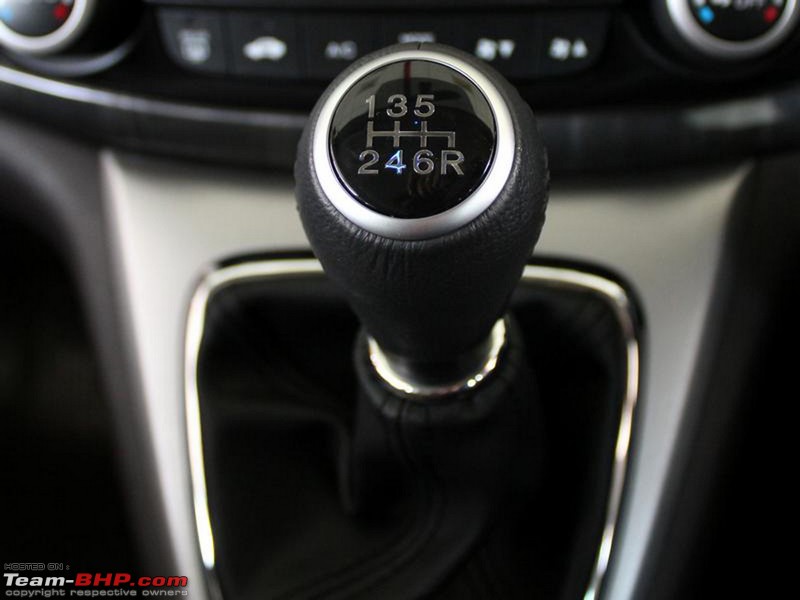 Disclaimer : Honda invited Team-BHP for the CR-V test drive. They covered all the travel expenses for this driving event.
Disclaimer : Honda invited Team-BHP for the CR-V test drive. They covered all the travel expenses for this driving event.
 (35)
Thanks
(35)
Thanks

 (27)
Thanks
(27)
Thanks

 (36)
Thanks
(36)
Thanks

 (59)
Thanks
(59)
Thanks

 (17)
Thanks
(17)
Thanks
 (1)
Thanks
(1)
Thanks
 (1)
Thanks
(1)
Thanks

 (11)
Thanks
(11)
Thanks
 (1)
Thanks
(1)
Thanks

 (1)
Thanks
(1)
Thanks




